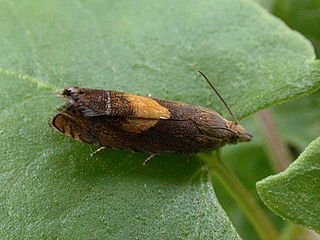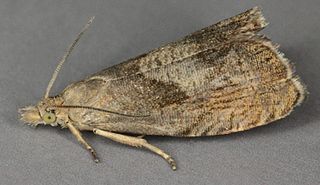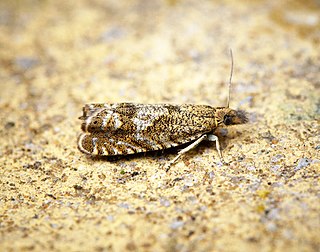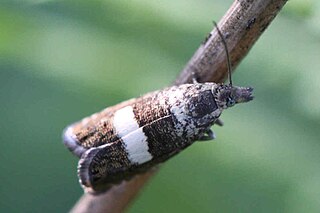
Dichrorampha acuminatana is a moth of the family Tortricidae. It is found in Europe and the Near East.

Dichrorampha petiverella is a moth of the family Tortricidae. It is found in the Palearctic realm.

Dichrorampha simpliciana is a moth of the family Tortricidae. It is found in Europe and the Near East.

Dichrorampha sedatana is a moth of the family Tortricidae.

Dichrorampha is a genus of moths belonging to the subfamily Olethreutinae of the family Tortricidae.

Dichrorampha heegerana is a species of moth of the family Tortricidae. It is found in central Europe, Sweden, Finland and Russia.

Dichrorampha alpinana, the broad-blotch drill, is a species of moth of the family Tortricidae. It is found in almost all of Europe.

Cnephasia conspersana is a species of moth of the family Tortricidae. It is found in Ireland, Great Britain, France, Italy, Portugal, Spain and North Africa. The habitat consists of coastal chalk downlands and heathlands.
Cnephasia heringi is a species of moth of the family Tortricidae. It is found in Bulgaria, Greece, North Macedonia, Russia and Turkey.

Dichrorampha vancouverana, the tanacetum root moth, is a moth of the family Tortricidae.

Dichrorampha aeratana is a moth belonging to the family Tortricidae. The species was first described by Pierce and Metcalfe in 1915.
Dichrorampha agilana is a moth belonging to the family Tortricidae first described by Johan Martin Jakob von Tengström in 1848.

Dichrorampha consortana is a moth belonging to the family Tortricidae. The species was first described by James Francis Stephens in 1852.
Dichrorampha flavidorsana is a moth belonging to the family Tortricidae subfamily Olethreutinae Tribe Grapholitini first described by Henry Guard Knaggs in 1867.
Dichrorampha incognitana is a moth belonging to the family Tortricidae. The species was first described by Jerzy Kremky and Maslowski in 1933.

Dichrorampha plumbagana is a moth belonging to the family Tortricidae first described by Georg Friedrich Treitschke in 1830.

Dichrorampha plumbana is a moth belonging to the family Tortricidae first described by Giovanni Antonio Scopoli in 1763. It is native to the Palearctic including Europe.
Dichrorampha senectana is a moth belonging to the family Tortricidae first described by Achille Guenée in 1845.
Dichrorampha sylvicolana is a moth belonging to the family Tortricidae. The species was first described by Hermann von Heinemann in 1863.

Dichrorampha sequana is a species of moth belonging to the family Tortricidae.













